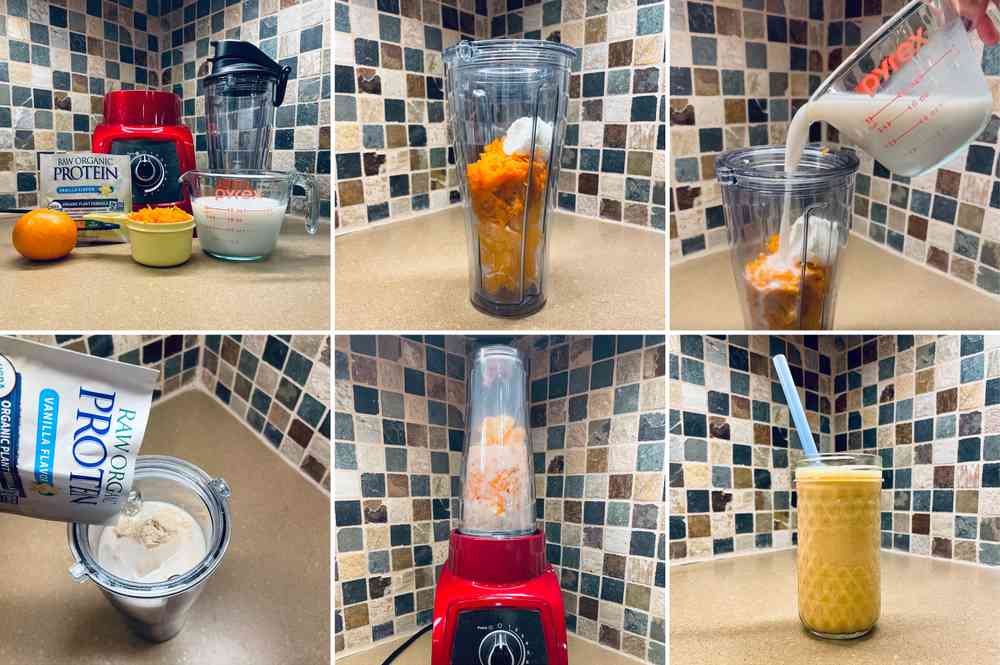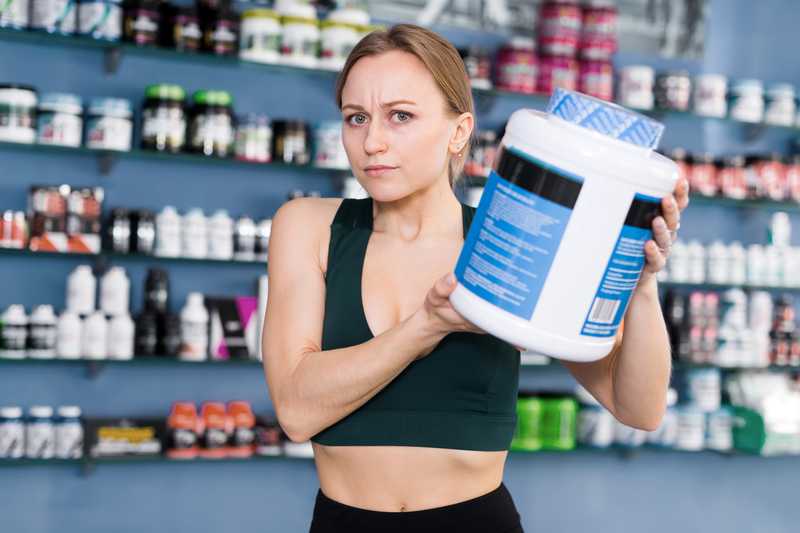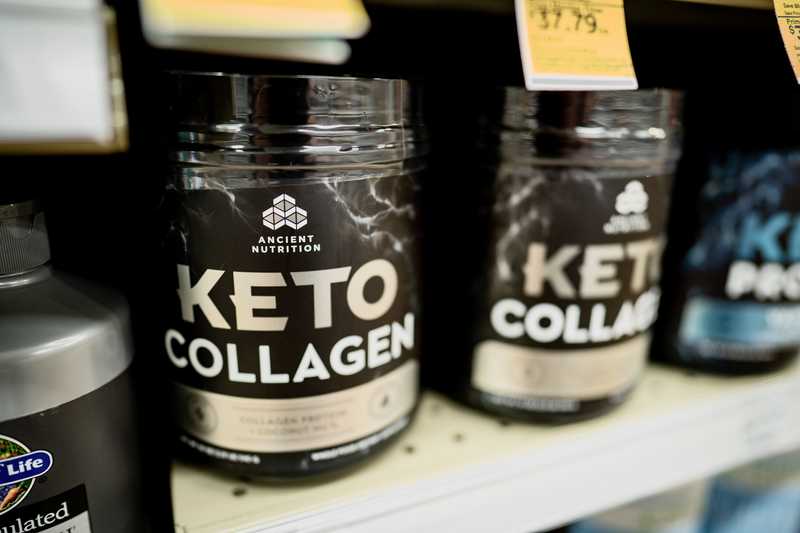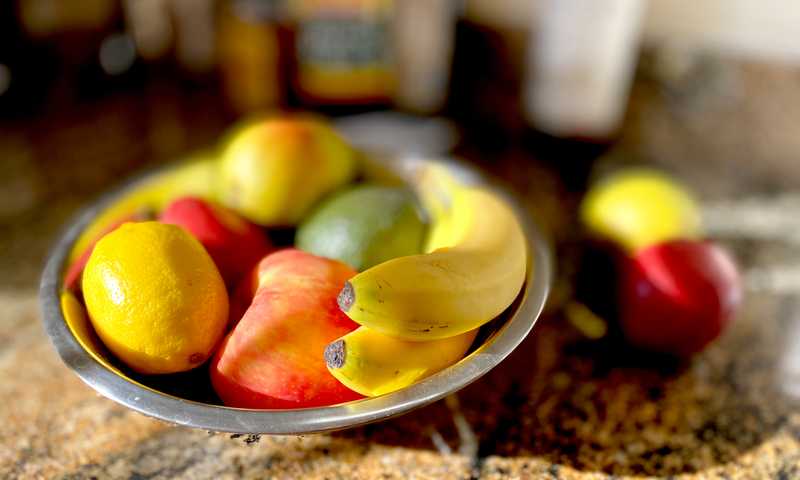As a teenager, I participated in the junior high show choir, ran track and cross country, and played the violin. All of these activities had something in common: early morning practices. At that time my go-to breakfast consisted of Carnation Instant Breakfast and a granola bar. It was easy to stir up, consume, and rush out the door.
Despite my best attempt at thinking healthy, and having the beginning idea that I needed protein and some vitamins every day, this breakfast left me hungry and unsatisfied all morning.
I now know that my "healthy" chocolate milk and granola bar were simply sugar bombs (almost 2 tablespoons of added sugar) without enough protein, calories, fiber, or fat to keep me full. These days I fuel up using high quality protein powders that I blend into smoothies, stir into oatmeal, or even add to yogurt. These breakfasts keep me full through my mornings (or any other time of day) and help my muscles recover after a hard workout.
In this article, I'll cover what to look for in a protein powder, why some powders might be better for you than others, and give you some delicious recipes to try out yourself. Keep reading to learn why protein powders can be beneficial for everyone!
Table of Contents
- The Importance of Protein
- What are the Types of Protein Powders?
- How to Choose a Protein Powder: Read the Label!
- What is the Best Protein Powder for Me?
- Tips for Dealing with Stomach Issues from Protein Powder
- Final Thoughts: Try a Few Options to Find What Works for You
The Importance of Protein
The importance of protein for our bodies and the benefits of eating enough are numerous. For a full dive into this topic, check out our blog post Does Protein Give You Energy? A Full Protein Intake FAQ, which includes instructions for determining how much protein you need.
In short, protein is needed to support:
- Your immune system
- Cellular function
- Sustaining muscle mass
- Regulating blood sugar
- Making hormones
- Supporting bone mass
- Making neurotransmitters (chemical messages in the brain) that improve our memory and mood.
It's also what our hair, skin, and nails are made of. As you can see, without adequate protein we practically fall apart.
What are the Types of Protein Powders?
So, you think you might need to get more protein in your diet, and you want to try a protein powder. You have a lot of options, and it can be overwhelming. There are 5 main types of protein powders on the market:
- Whey
- Caseine
- Egg white
- Plant-based proteins
- Collagen
Which you choose will be based on your dietary beliefs (omnivore, vegetarian, pescatarian, vegan), any food sensitivities you have, and ultimately, flavor.
How to Choose a Protein Powder: Read the Label!
No matter what your goal in using a protein powder, choose one that has at least 25g of protein per serving and very little added sugar/carbohydrate.
Unless you are using it as a meal replacement or are an extremely active athlete, it's easy to make a smoothie and add fruit or veggies for carbs. If there is extra sugar in your powder, it's easy to go over on your carb needs. Try to choose brands with the total carbohydrate content in the single digits.
Depending upon your diet beliefs and your body's needs, some brands use non-caloric sweeteners such as sucralose (Splenda), acesulfame potassium (Ace k), stevia, monk fruit, or erythritol. If you know any of these sweeteners cause you problems steer clear of that brand.
Some brands use small amounts of refined sugar or coconut sugar. These might be a better choice for you over a powder using one of the non-caloric sweeteners, particularly if you notice any stomach issues.
You will definitely need to read the ingredient list if you want to exclude any artificial flavorings, artificial colors, or emulsifiers such as guar gum and xantham gum. One example of a very basic or "clean" brand is Naked Whey.
As with any food sensitivity or allergy read labels carefully. Common allergens such as soy and gluten can pop up in even high quality brands.
What is the Best Protein Powder for Me?
Let's review the best protein powder based on your goals.
Weight Loss
As stated previously the best protein powder for weight loss is the one that fits your diet style. No matter if you are eating low fat or low carb/keto, getting adequate protein is key to helping you lose fat and maintain muscle.
Adding a protein shake in with a meal or as a snack (1-2 scoops of protein powder, plus almond or coconut milk) can help reduce hunger and cravings. This makes reducing calories easier and more sustainable.
If you find you do not tolerate whey protein, there are egg white protein powders. In the past I've used Jay Robb, but there are other brands you can try, such as NOW. They do blend into shakes and smoothies easily, but you will probably notice a slight sour taste to them.
Collagen protein powders might also be a better option for any stomach sensitivities (see more in the tips below).
Blood Sugar Control
As long as your protein powder doesn't have excess carbohydrate or sugar, simply choose a powder that you like the taste of. Protein does not raise blood sugar unless consumed in large quantities, so many people with diabetes or those who follow a ketogenic diet find that protein powders easily fit into their diet. As someone who has tasted many different protein powders my family's current favorite brand is Levels.
Another very popular brand is Optimum Nutrition Gold. It has been voted best protein powder for many years and is sold at most supplement stores, grocery stores, and online.
Carrot Cake Protein Smoothie
Try this carrot cake smoothie for a blood sugar friendly breakfast. Simply add all ingredients to your blender and hit go:

- 1 cup unsweetened nut milk
- 1-2 scoops vanilla protein powder
- 1/2 cup shredded carrots
- 1 clementine peeled
- 1 tablespoon chia or flax seeds (optional)
- 5-8 Ice Cubes
- 2 tablespoons cream cheese
For Athletes
Depending upon the athlete and their goals, including a pre or post workout protein shake is an easy way to make sure they hit their protein needs. Ultimately, they can choose from any of the options in this article, based on their preference.
For female athletes in particular, it's important to get in adequate protein after a hard exercise session.
Dr. Stacy Sims states:
We’ve heard the advice to drink or eat a snack with 3:1 ratio of carbs to protein within a specific time period after a hard workout. However due to progesterone's role in breaking down muscle, women require more protein (2:1 ratio) within 30 minutes of a hard workout.
Yummy Protein Packed Oatmeal
Want a yummy and filling post workout breakfast? Try this protein-packed oatmeal:
- Cook 1/2 cup of rolled oats in water (stove top or microwave)
- Stir in 30-40g of protein powder + 2-4Tbs milk + 2tsp butter or coconut oil
- Top with berries, chopped nuts, or a drizzle of maple syrup.
College and professional athletes may need to check with their coaches prior to using a protein powder. Some may be tainted with banned substances that could get them disqualified from their sport. In general, most are fine, but its always best to double check.
Pre-Workout Tips
Yes, you can use the fancy pre-workout products on the market. However, if you want to care for your tendons and ligaments, try using a collagen powder before you begin exercising instead.
Ten to twenty grams of collagen before workouts has been shown to help support connective tissue recovery. For more info on collagen hop over to our article all about collagen.
Throw a scoop of Primal Kitchen Collagen Fuel into your coffee if you're an early morning exerciser. It would also work well in oat milk if you avoid caffeine or want to have some before an evening workout.
I have tried Vital Proteins collagen creamer several times and to be honest, I think it tastes terrible. Their unflavored powder seems fine, as do most other brands found in stores.
For Building Muscle
The key to any good bulk (muscle hypertrophy) is staying in a calorie surplus. This is a time when you can get away with a high calorie protein powder.
Mass gainers or meal replacements, such as one that includes fats and carbohydrates, are an easy way to increase calories without increasing food volume too much. An example of this would be Transparent Labs Mass Gainer with: 790 calories, 53g protein, 114g carbohydrate (from organic maltodextrin), and 14g fat in two scoops.
If you don't want the added carbs and fat in your protein powder, my kettle bell coach Jordan Kunde-Wright recommends both Driven and Klean Athlete brands which can be purchased online. Their products can be used by anyone, not just athletes.
For Snack Time
Did you know that milk contains two types of protein? While most of us are familiar with whey, caseine is the main protein found in milk making up 80% of milk's protein content.
While whey and other protein powders digest very quickly, casein digests slowly. This might make it a better option for people who often feel hungry between meals.
Casein has also been long used by body builders as a bedtime snack to help prevent muscle breakdown while they are sleeping.
In general I recommend people stop eating several hours before bed, but if dinner is early, and you stay up late; mixing up a shake is certainly a more healthful option than typical late night snacks.
Most of the brands previously listed make casein powders and can be found on their websites or supplement stores.
Vegetarian and Vegan Options
Plant protein powders used to be considered inferior to whey, but multiple studies now show that they are just as potent at helping build muscle and increasing strength.
For vegans, there are a wide variety of plant based powders. The most well known brand is probably Vega and it can be found at Costco, Walmart, grocery stores, and even Walgreens.
For people needing a blood sugar friendly plant protein, I recommend the Vega All-In-One powder. Yes, it has 11 grams of carbohydrate but 6 of those are from fiber, which is important for gut health and keeping glucose levels steady.
Many other people like Orgain, but I found it to be grainy.
Kachava is storming onto the plant protein powder scene. I've never tried it and finally looked at their website. Its a powerhouse of pea and grain proteins with added 'super food' powders including mushrooms, berries, and kale.
Kachava meets the threshold of 25 grams of protein per serving but is higher in carbohydrate with 22-25 grams per scoop. It does have 4-7 grams of fiber, but I doubt their suggestion of mixing or blending in water/ice would leave someone full for very long. Perhaps blending in an avocado would increase the fat and calories enough to help out.
At $60 for 15 servings per bag ($3/scoop), this product is definitely on the expensive side, compared to other powders that cost about $1.50-$2/serving.
Cancer Survivors
Most of us know someone who has had cancer and undergone chemotherapy and/or radiation. Many people struggle with side effects from these treatments including nausea, vomiting, diarrhea, poor appetite, difficulty swallowing, fatigue, and generalized weakness.
Its important for cancer patients to consume enough protein during and after treatment to help prevent muscle wasting (cachexia). Most hospitals encourage patients to drink products like Boost and Ensure. I'd argue that the sugar and vegetable oils in these products are highly inflammatory and that if patients and their caregivers are willing and able, a more nourishing smoothie can be made at home.
Boost or Ensure Alternative
Try this smoothie recipe instead of Boost or Ensure. Just blend together:
- 1/2 cup of canned coconut milk
- 1 cup of frozen berries, cherries, or peaches
- 1 scoop of protein powder
- 1 scoop fruits/greens powder (optional)
- 1-2 hand fulls of spinach, kale, or swiss chard (optional)
- 1/2-1 teaspoons of ground ginger (can help soothe an upset stomach)
- 1/2 cup of water, ice, or coconut water to thin to desired consistency
For Kids
Yes, your kids and teens can use protein powders.
Kids need lots of protein to help them grow, learn, and support their immune system as they fight off every germ they encounter at school. I'm finding myself regularly encouraging parents to blend up a protein smoothie, or send their kids to school with a quick protein shake and a banana. It's certainly a much better option than toaster pastries.
As a mom, I often shake up a cup of whole milk with chocolate or strawberry protein powder for my sons to drink with breakfast or an afternoon snack. This helps their blood sugars stay more balanced and prevents them from getting "hangry."
My 1.5yr old loved this blueberry smoothie
It was a staple when he was recovering from several rounds of upper respiratory infections:
- 1 cup of coconut or almond milk
- 1/2 banana
- 1/2 to 1 cup frozen blueberries
- 1 tablespoon of nut or seed butter
- 1 scoop of vanilla or strawberry protein powder
Pre-Made Shake Options
Some people just can't be bothered with a blender or shaker bottle and for them there are premade protein shakes on the market. Premier Protein, Muscle Milk, Quest, and Fairlife 42 all taste good and are easily found at most grocery stores. If you like to avoid artificial colors, flavors, and sweeteners — these options will not be for you.
If you want a more "natural" pre-made shake, try Jocko Milk or Slate Milk. Both are found online.
While working with gastric bypass patients, I found that many had become severely lactose intolerant and no longer tolerated any whey based protein shakes. For them, and my vegan patients, I recommend trying Owyn, Ripple, or Aloha.
Tips for Dealing with Stomach Issues from Protein Powder
If gas and bloating have been problems in the past when using whey protein, this type of protein may have been part of the problem.
When I work with patients who have many food sensitivities, often our only option is to use collagen protein, sometimes called "hydro beef protein." These are typically more expensive compared to whey or plant based powders; and I find they don't dissolve as easily when used in a shaker bottle. However, they do taste fine when blended into a smoothie.
I've used Nutridyn Dynamic paleo protein in the past, but there are many other brands on the market these days.
Compared to whey, collagen is low in leucine, an amino acid needed to stimulate muscle recovery. For this reason some people do not believe it will be effective as a recovery shake after exercise.
However, if someone does not tolerate or like any of the other protein powders, and collagen helps them get in adequate calories after working out or just in general, then it's a great alternative.
Final Thoughts: Try a Few Options to Find What Works for You
Ultimately, using protein powder to boost your daily nutrient intake can be a worth while endeavor.
No matter what powder you choose, look on the website or ask the store about their return policy. It can take some "trial and error" to find the protein powder you actually like and tolerate. Some companies offer single serve samples, these are a great way to try new brands or flavors with out investing in a whole container.
Before you go, please read our disclaimer. This blog is intended for informational purposes only. We are not providing legal or medical advice and this blog does not create a provider-patient relationship. Do not rely on our blog (or any blog) for medical information. Always seek the help of a qualified medical professional who has assessed you and understands your condition.

Brenna holds a Master's in Applied Nutrition from Northeastern University in Boston and a Bachelors of Science in Dietetics from Minnesota State University, Mankato. She is passionate about teaching people how foods interact with their body and helping them learn how what they eat affects how they feel.

Brenna holds a Master's in Applied Nutrition from Northeastern University in Boston and a Bachelors of Science in Dietetics from Minnesota State University, Mankato. She is passionate about teaching people how foods interact with their body and helping them learn how what they eat affects how they feel.



